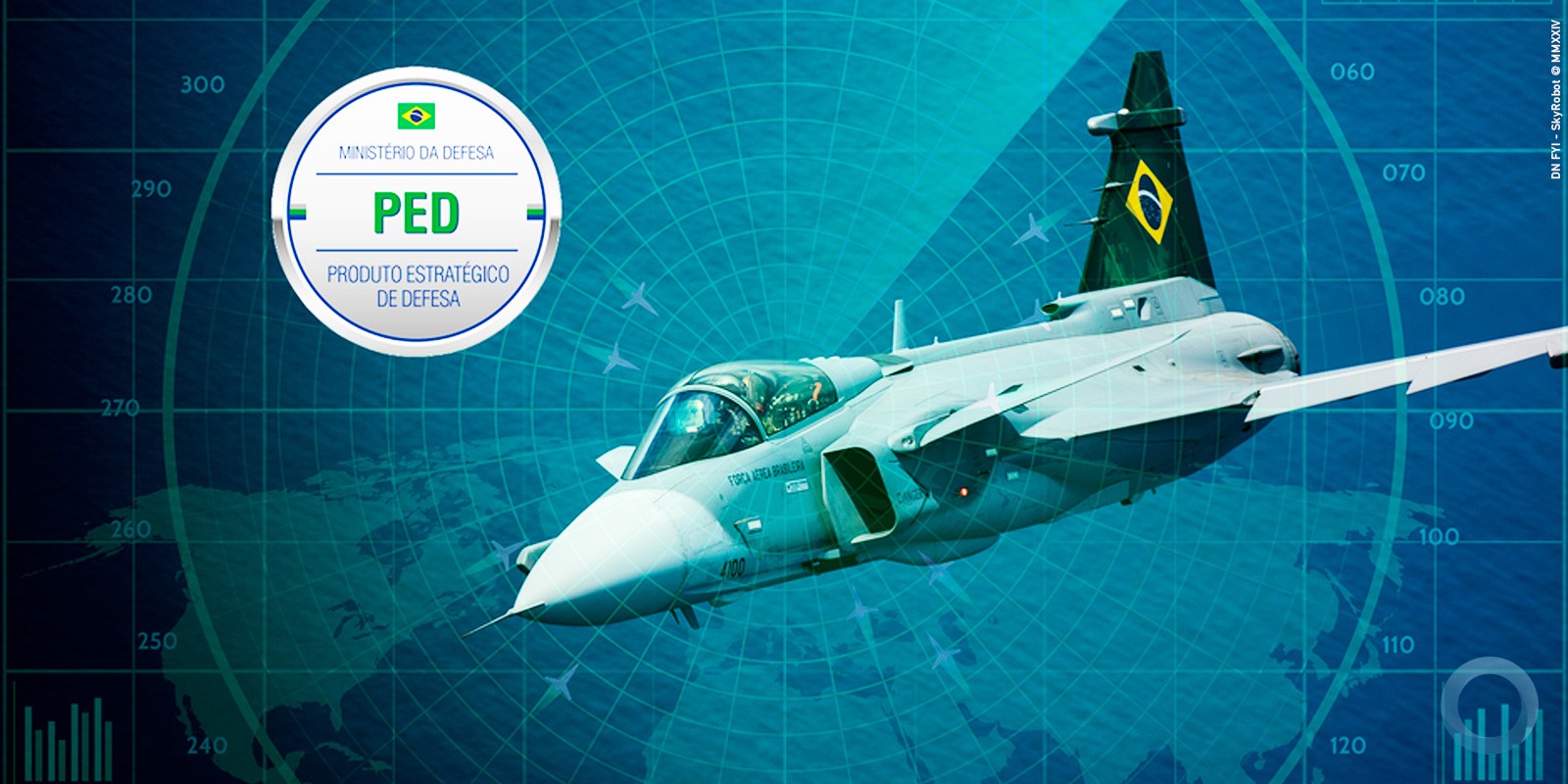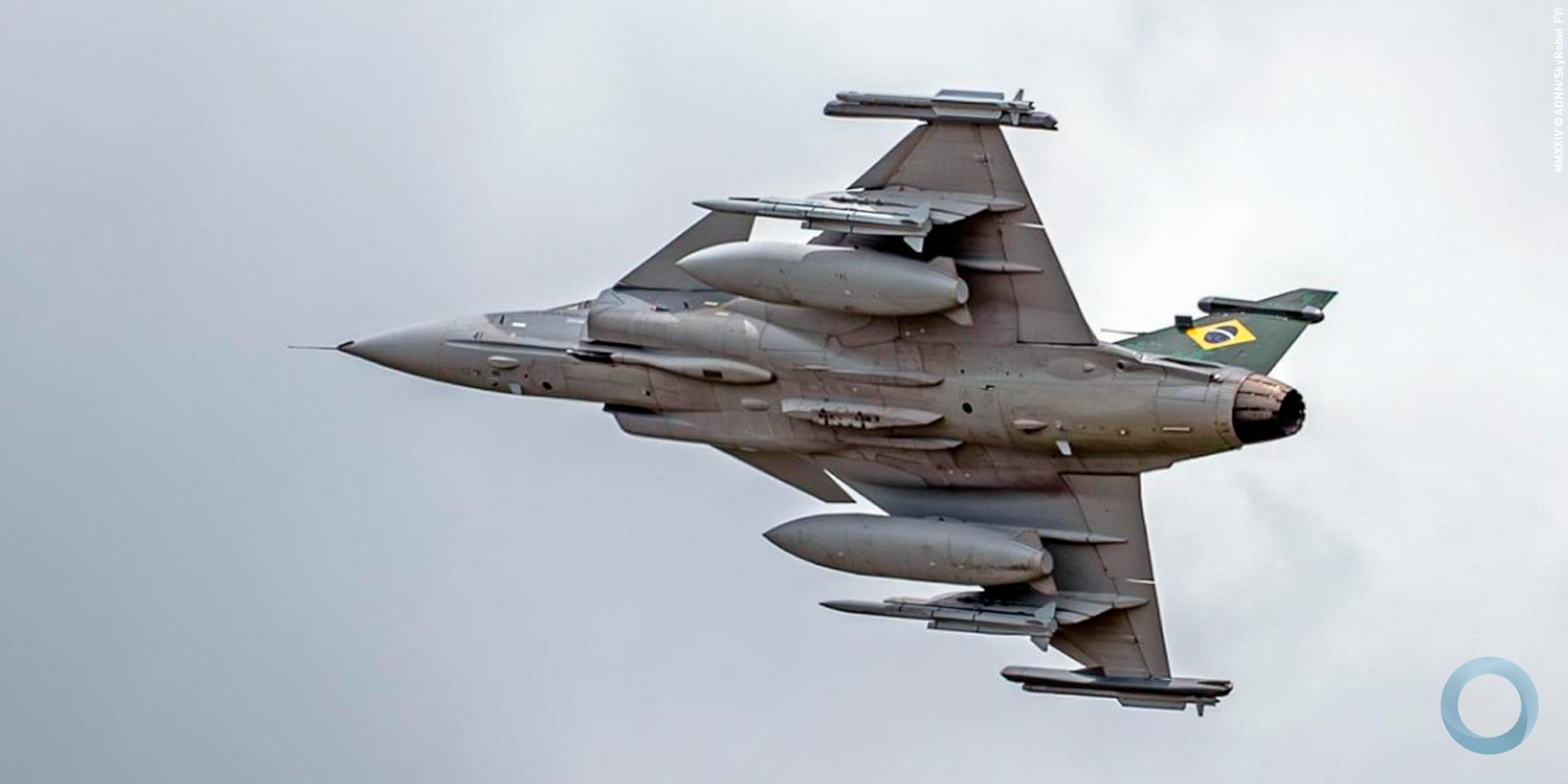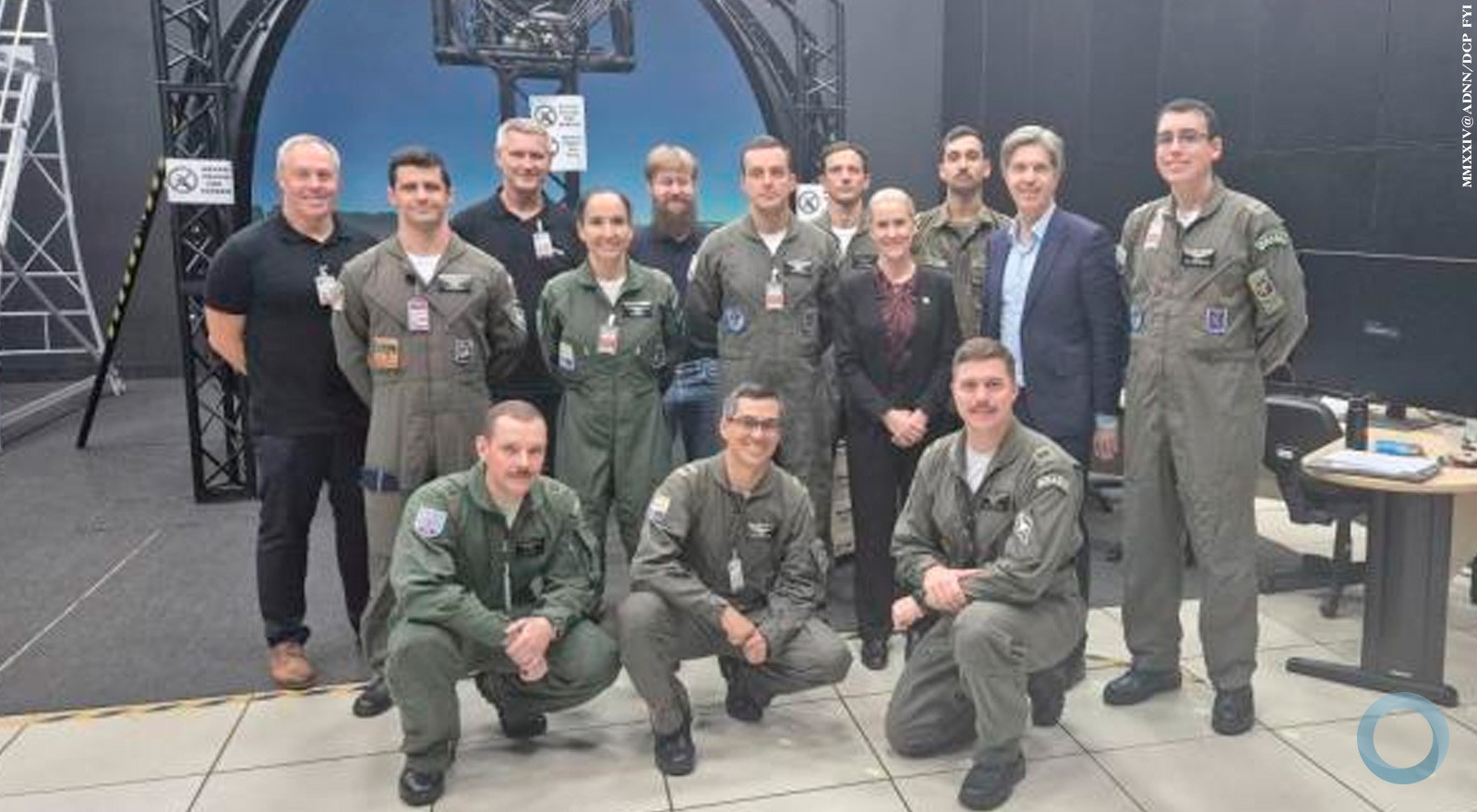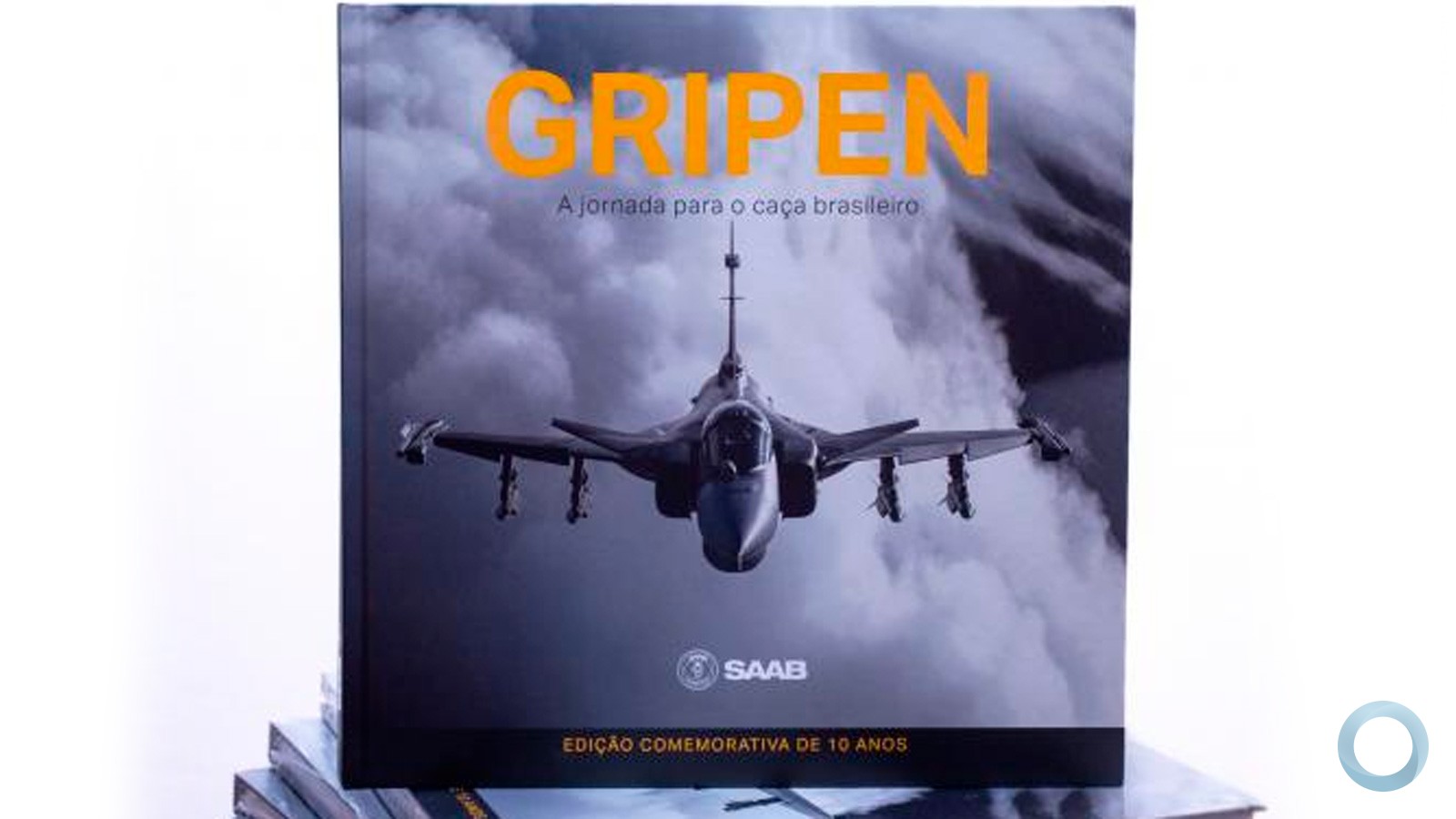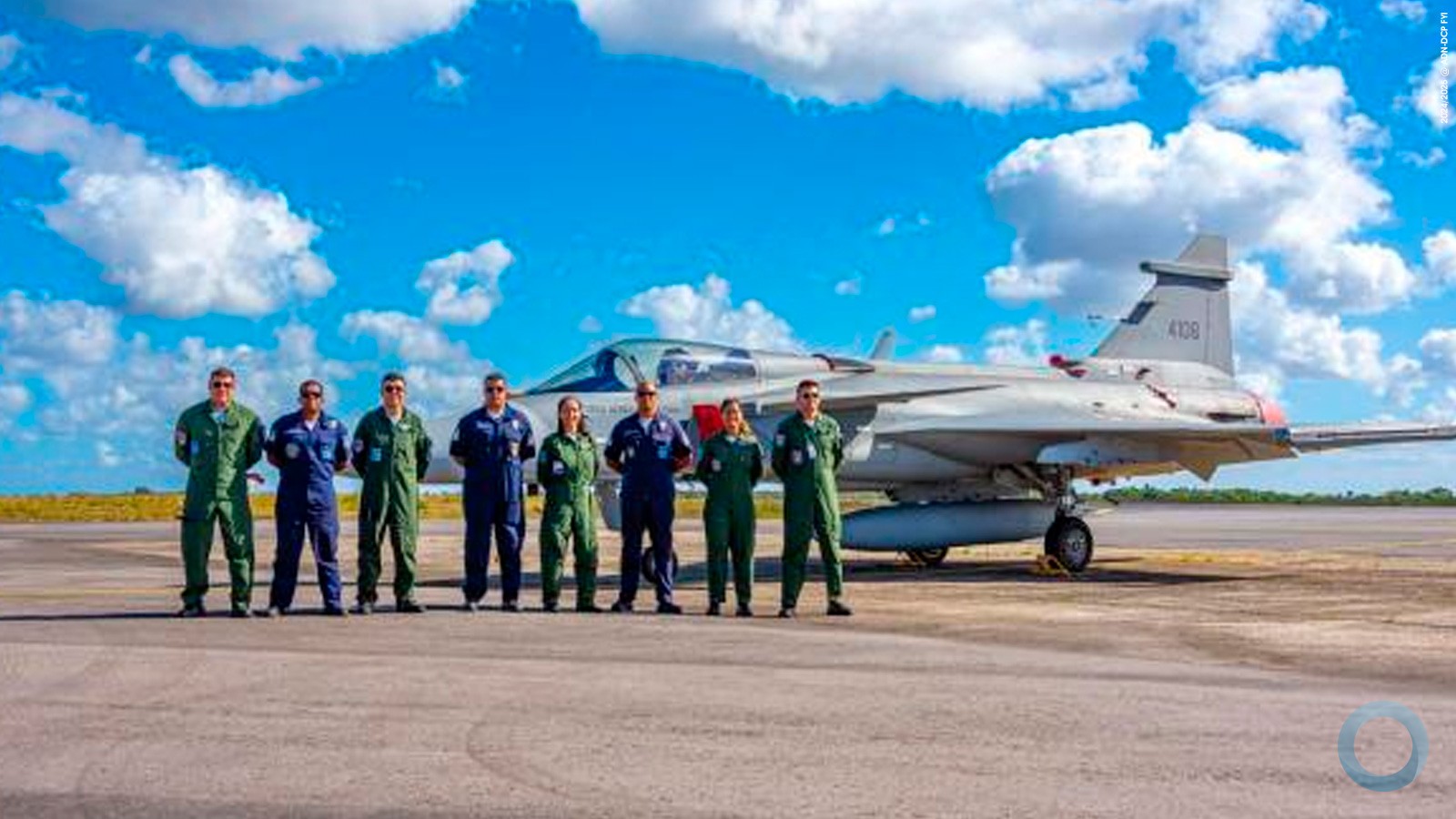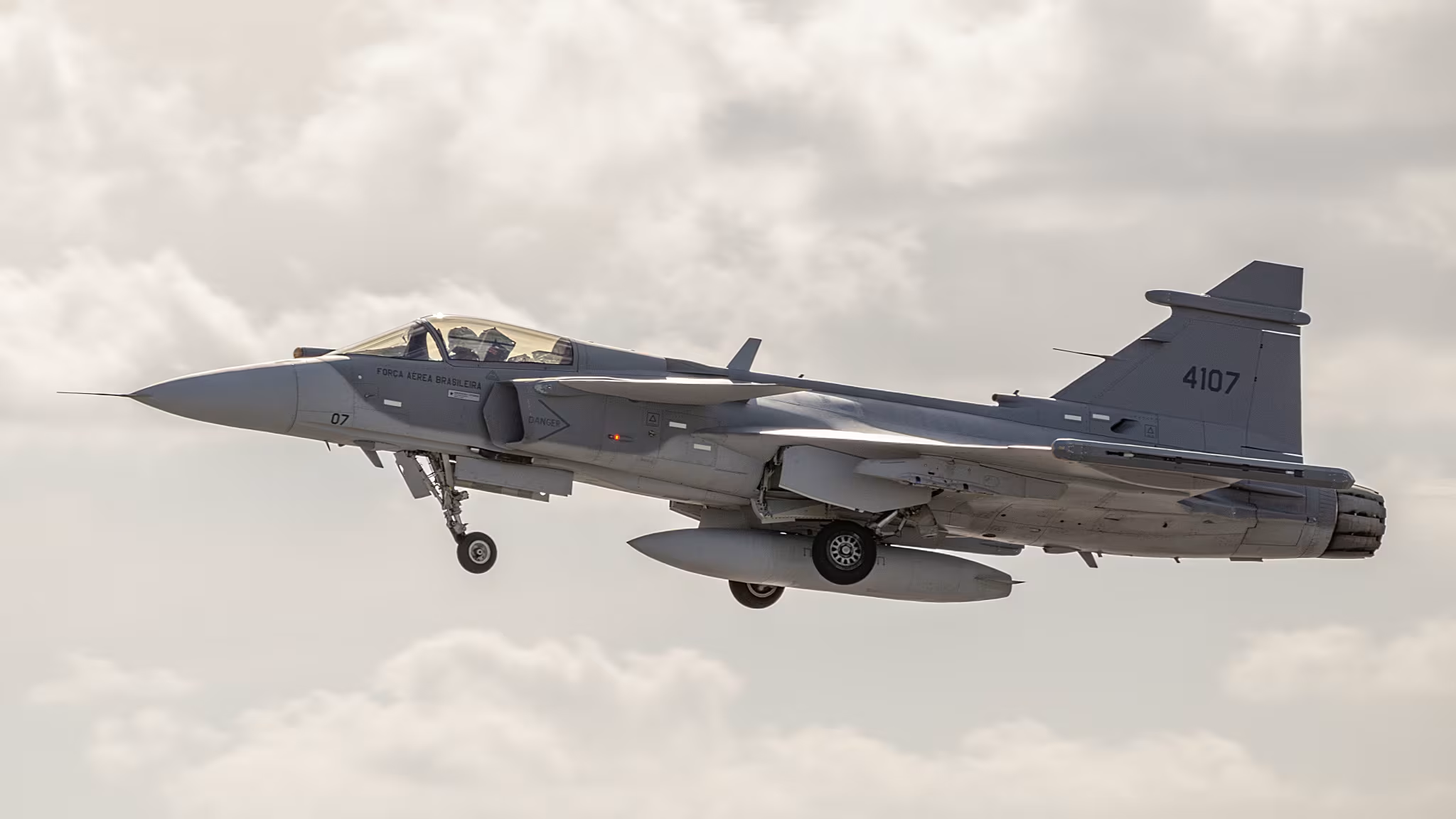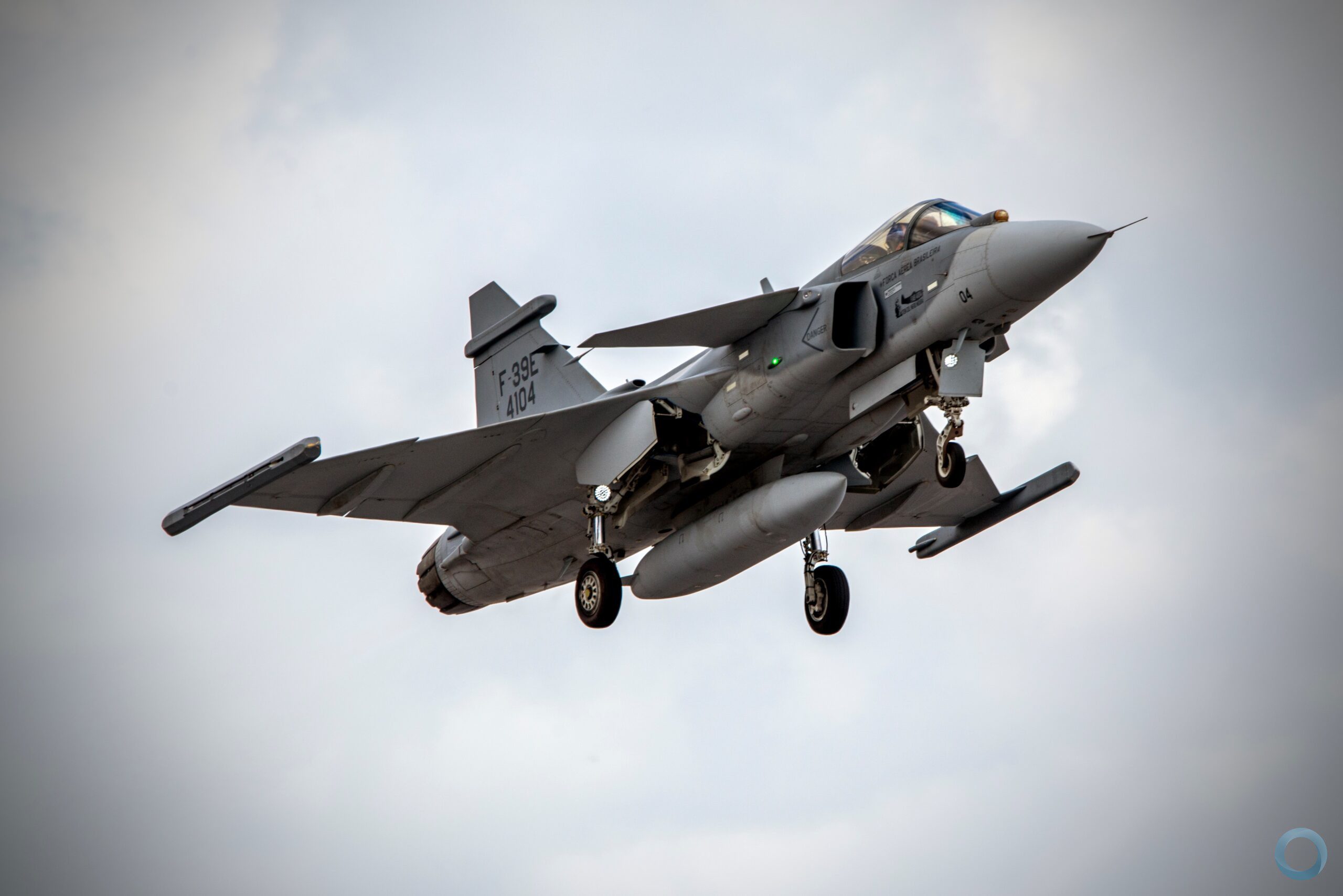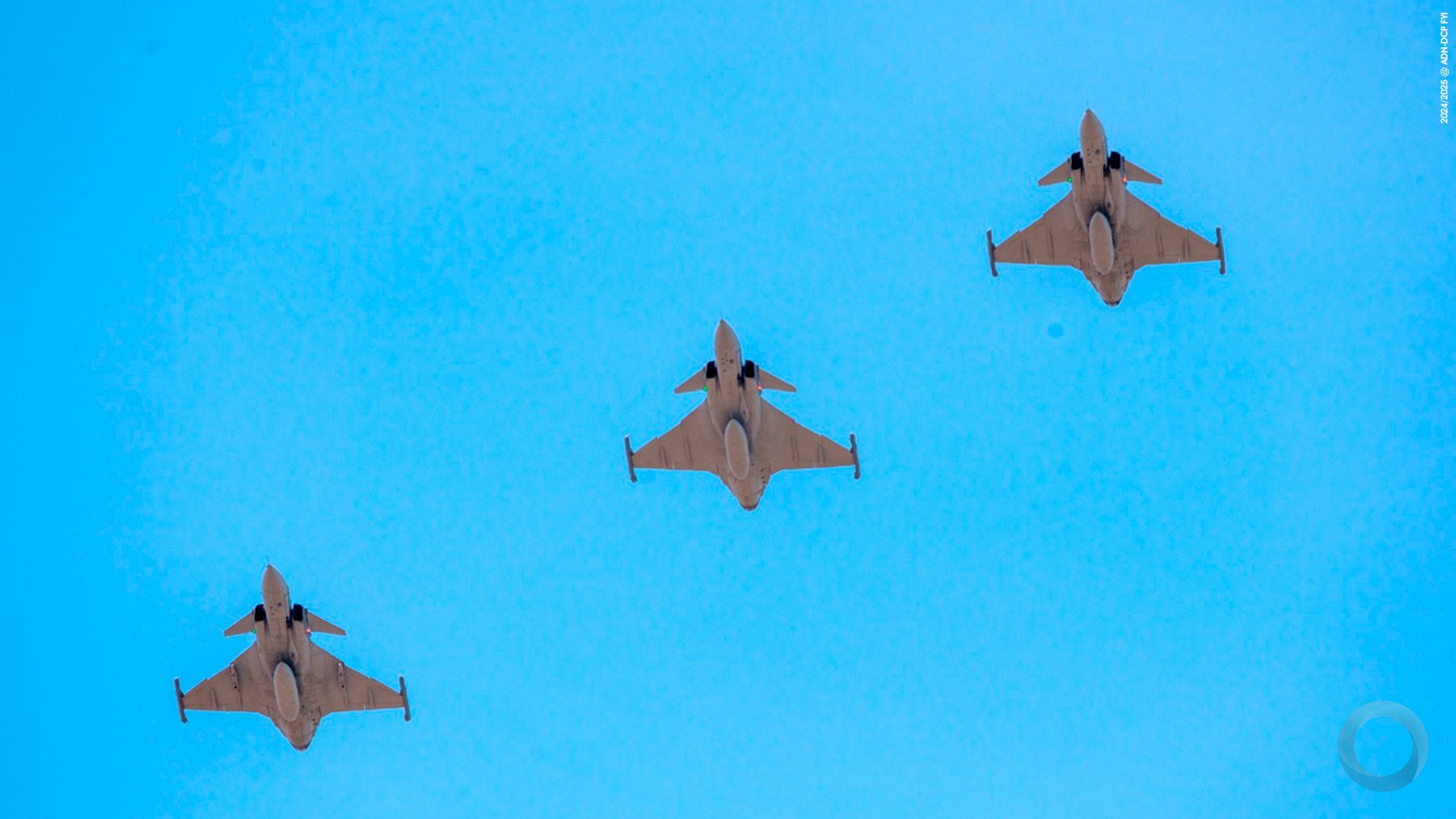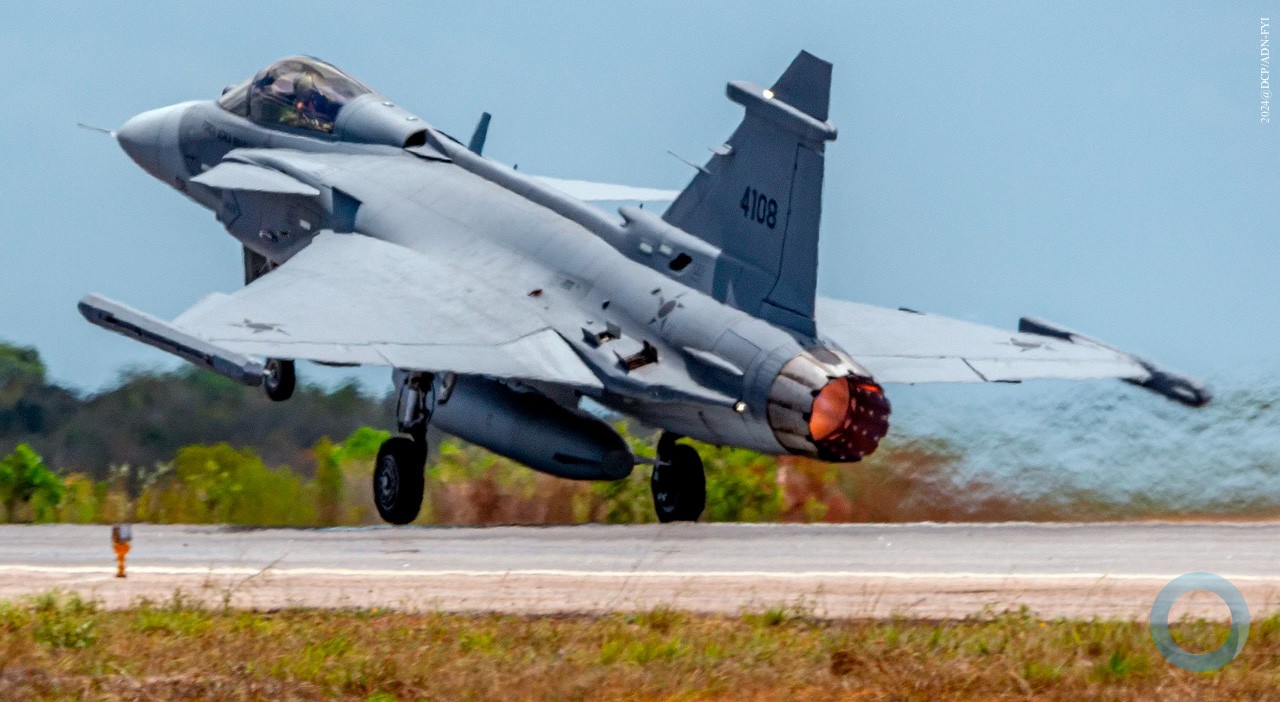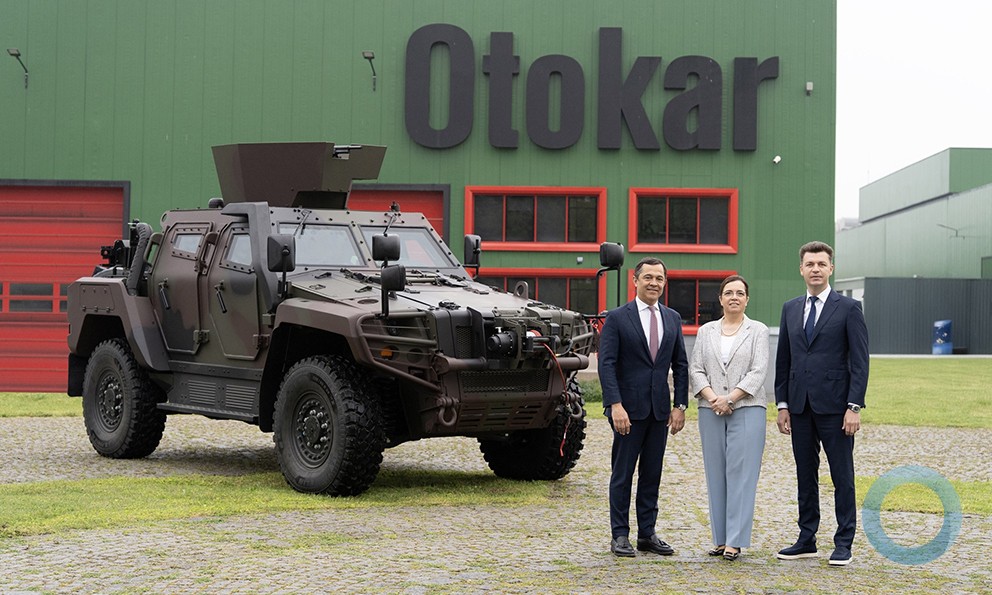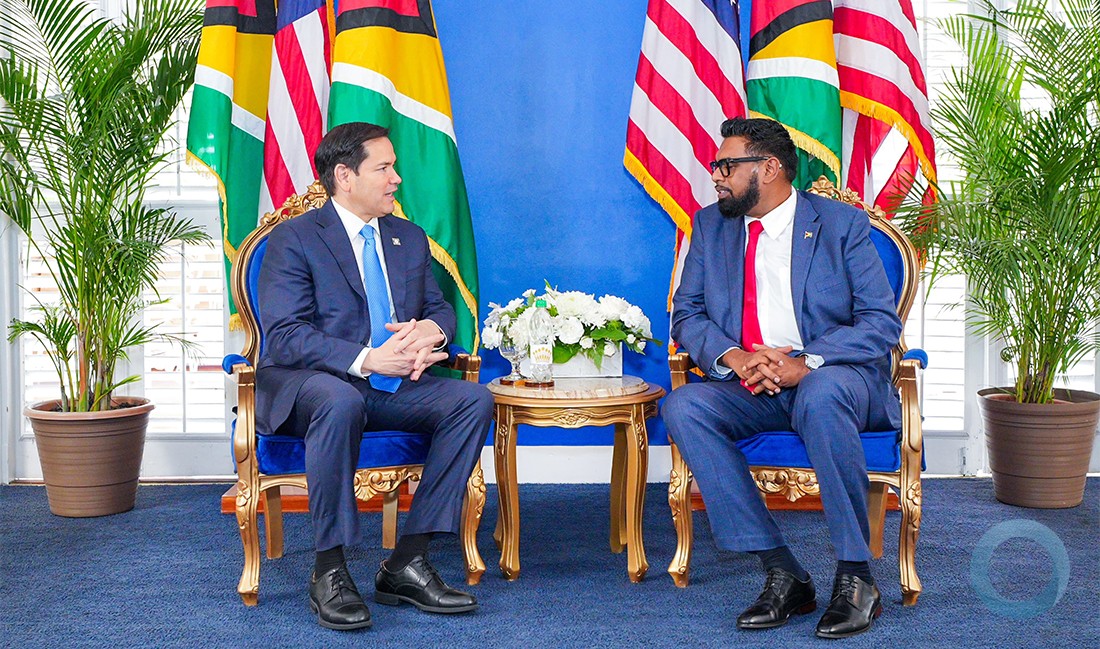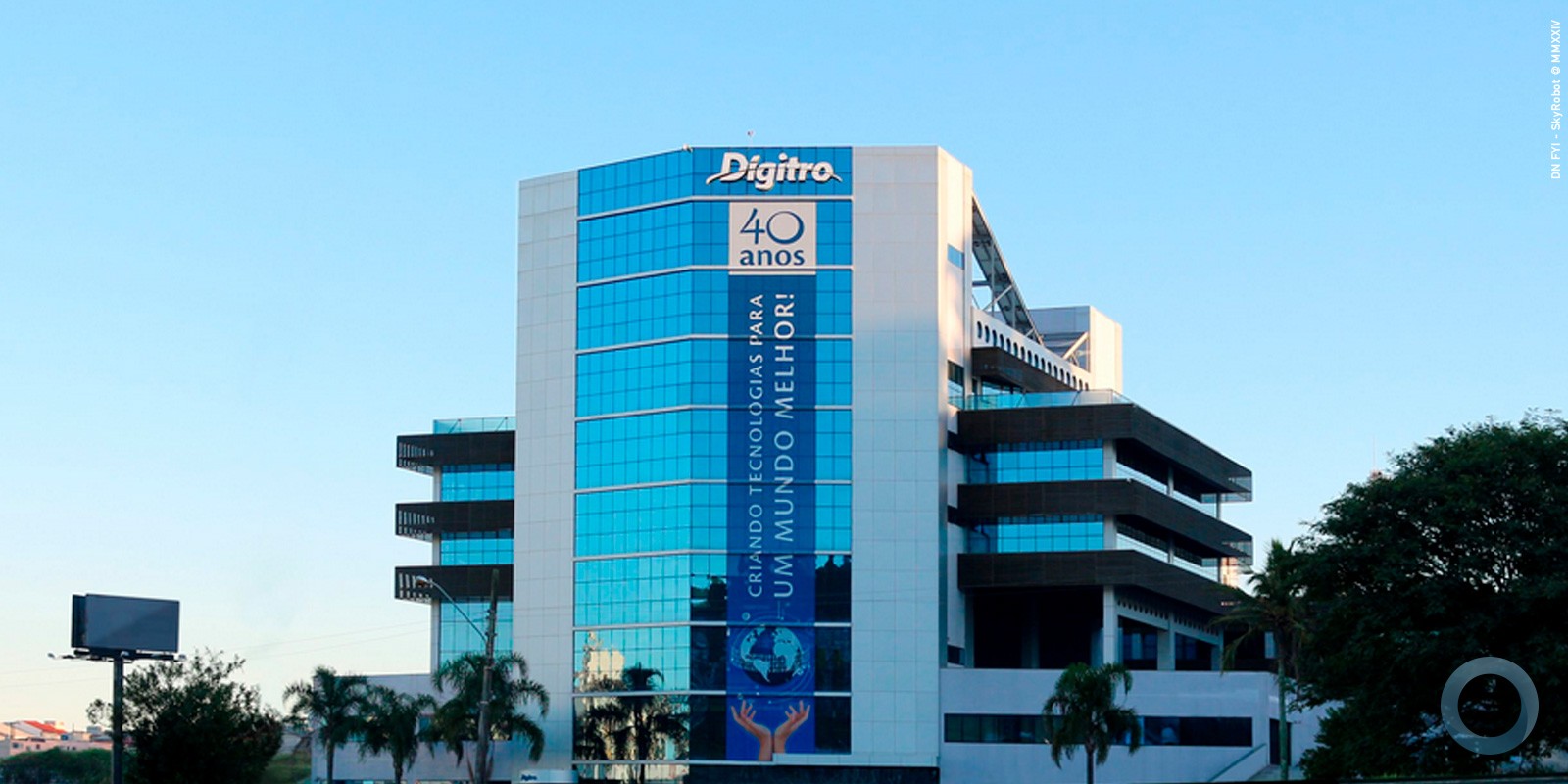Text in portuguese
DefesaNet entrevista o diretor de negócios Gripen da SAAB no Brasil, Mikael Franzén Link
Editor
Nelson Düring
Chief Editor DefesaNet
Edition Nicholle Murmel
On November 28th, the DefesaNet team interviewed Mikael Franzén Head of business unit Gripen Brazil at Business Area Aeronautics at SAAB. About how far the Gripen E/F (Called NG in Brazil), project has come, and what lies ahead for the Brazil-Sweden partnership.
DefesaNet: We now have concrete facts about the [Gripen] project. The first flight, the first supersonic flight. How many flight hours do we have so far?
Mikael Franzén: I don’t know the number exactly, but we are progressing according to the plan. We don’t really use numbers to measure what we’re doing. The supersonic flight was, of course, a big step, and it was uneventful and very positive. Now we are expanding the envelope in terms of both speed and altitude, and we’re also going to start experimenting with different external loads that will fly along with the aircraft.
DefesaNet: The current envelope is being tested with external loads as well?
Franzén: No. But we’re going to begin those tests very soon.
DefesaNet: The Gripen project started back in 2015. What have been the main big achievements in the last two years?
Franzén: This project is sort of twofold. On one hand, there are the weapon systems and the fighter jets, plus providing support systems for the Brazilian Air Force. On the other, there is the technology transfer process, plus the development of the one-seat and two-seat aircrafts, which are exclusively for Brazil – the Gripen F. Sweden has the Gripen E (one-seat), but for Brazil there are going to be both the Gripen E and F. The development of the two-seat version is ongoing in Sweden, but also very much at Gavião Peixoto. So that is the main thing happening at the moment.
There is also the technology transfer, which means training Brazilian personnel in Sweden, mainly engineers, who are now returning to Brazil to work at Gripen Design Development Network (GDDN), we have around one hundred Brazilian engineers working alongside 25 Swedish ones working on ten different areas, and half of these people developing the two-seat Gripen version. The team at Gavião Peixoto is as big as the team back in Linköping and they are both working on the aircrafts together.

GDDN – Gripen Design and Develpment Network at Gavião Peixoto Plant
There is also a lot going on at Porto Alegre, concerning the design of a new cockpit and the Wide Area Display (WAD), head-up display (HUD) and helmet-mounted display (HMD), which will be supplied along with the aircrafts to Brazil. And there’s not only the hardware, but also software and all of those components being developed by AEL Sistemas.
We also have our work on technology such as simulators and many other areas going on both in Brazil and in Sweden.
Brakes off, full power! Here's the first footage of Gripen E taking off #smartfighter #firstflight pic.twitter.com/ubiw81DAAF
— Saab AB (@Saab) 15 de junho de 2017
DefesaNet: You have been in contact with Brazilian companies to take part in the Gripen project. How’s the integration between them and their Swedish partners?
Franzén: It varies depending on what aspect of the aircraft we are talking about. In the case of Brazilian companies in charge of [software] integration, or that require secret data, the work is done at the GDDN, our main center. Now, if we’re talking about structure design, first the engineers go to Sweden for training, then they bring the work packages back to São José dos Campos.
Then, the components are sent either to Gavião Peixoto or Linkönping. There’s a lot of work being done in many places, but our main hub is at Gavião Peixoto. Next year, we’ll be introducing a simulator at the GDDN, and the all systems will be able to be tested. Right now, in Porto Alegre and São José dos Campos, we can only develop and test parts of the project.
DefesaNet: At this point, would you say the main goals of the Gripen project are being or have been achieved?
Franzén: Yes. The most important thing that took place this year was the first flight of the 39-8 aircraft, and it was very successful. The flight test have been very good so far, and that’s according to plan, as we also expect to expand the envelope. We are building several aircrafts at the moment as well. Other achievents we had this year include the first wide-area display, also the first ‘C model’ [display], as we call it, will be concluded and delivered in March 2018 and that is a big step too.
This WAD will first be incorporated into our simulator so all functions can be tested. There is the basic display software provided by AEL, as well as the tactical software developed by SAAB.

Artistic impression of cockpit with Wide Area Display (WAD) from AEL Sistemas
DefesaNet: So far, the equipment meets the requirements for the Gripen project?
Franzén: We have already started to run tests in our simulators with both Brazilian and Swedish pilots. At the moment, we have weekly simulation tests being conducted at the Linkönpig facility, and the pilots are giving us feedback on how the system works, and this information is then redirected to AEL, where the display can be optimized.
DefesaNet: Is the Swedish Air Force looking into incorporating the WAD system as well?
Franzén: They are looking into the system and we are currently discussing on the matter. I believe they will decide very soon on going somewhere with this.
DefesaNet: The Gripen is currently in a global campaign. The aircraft was showcased in India and, recently in Dubai. While on tour, what display system was offered to potential future customers?
Franzén: Brazil was the first to choose the WAD. We had thorough discussions with the Swedish Air Force back when the first Gripen E deal was signed a couple of years ago, when the WAD technology was not mature yet. Now it is, and we can see that in the simulator tests. So I believe that most customers, if not all, will choose the wide-area display in the future.
DefesaNet: Regarding the industrial plants and where the aircrafts will be assembled, is it going to be in São Bernardo? Will part of the assembly happen in José dos Campos? How will the SAAB Aeronautica Montagens (SAM) work?
Franzén:I don’t know if you already met Marcelo Lima (CEO for SAM). But he has already been named to direct the company, and we already chose the city of São Bernardo [do Campo] to receive the assembly plant.
DefesaNet: We had information here that the industrial plant would be moved elsewhere…
Franzén: We always analyze very thoroughly where to place a big facility such as the SAM. In the end, we chose São Bernardo, but we don’t have an exact location in the city yet. The final assembly of the aircrafts will take place at Gavião Peixoto, but most of the process will happen at the São Bernardo facility.
DefesaNet: What are the next main goals for the Gripen project?
Franzén: Right now we are building the test aircraft, which should be ready to fly in 2019. In the meantime, we will perform tests on various subsystems for the fighter jets, as well as their envelope – it’s going to be a very intense test period. We are also going to work on furthering the development of the tactical system for the aircraft, as well as the two-seat version, which is still in its early stages. Ideally, we want the two-seat Gripen to have the same levels of performance of the Gripen E version, so there is a lot of optimization to be done in the two-seat project we have right now.
Another important work front is the new cockpit, which will enter an intense development phase next year. This new feature won’t be incorporated into the Brazilian Gripen project yet because we are now focusing on training more people. Most of the personnel we’ve been training in Sweden are engineers, and now we’ll also be training test pilots and production professionals.
People from SAAB Aeronautica Montagens will stay from one to two years in Sweden, depending on how complex their occupation is, and we’ll also train people from EMBRAER. That means we are still in the beginning of the production phase.

GDDN inauguration, November 2016. Mikael Franzén is in the same row with SAAB, Bushke and EMBRAER Defesa & Segurança, Jackson Schneider presidents.
DefesaNet: SAAB is taking a very risky approach in terms of testing system integration – using several different computers to run both the flight and weapons systems, in order to make integration easier. Is that strategy going smoothly, running many processes at once?
Franzén: The purpose of working that way is to have a more flexible system in terms of modifications and adding new functions. There are basic flight safety and avionics protocols, upon which are placed the tactical functions. The basic, flight protocols softwares need to be created only once, and then tactical demands and improvements can be easily added. That’s the idea – to make the systems easier to modify in case the Brazilian or the Swedish Air Force demands a particular or new function. It will enable us to make quick changes for all our customers when they require.
These layers of software were sort of a feature on the Gripen C and D versions as well, but they’re not yet as flexible as the Gripen E will be. We are done with most of the flight and safety protocols and will proceed to developing the tactical layer of the software. So yes, we are satisfied with where we are now in terms of developing a flight system. It was a technical challenge, but now we are enjoying the benefits, and will continue to enjoy them in the future.
DefesaNet: Sweden has conducted its largest military exercise in 23 years – the Aurora 17 – and the Gripen took part in it as well. Have this exercise revealed any new insights or demands to be incorporated into the E and F versions?
Franzén: The requirements for the Gripen E have been designed to suit those [customers] with very low logistic footprint, so that the aircraft is easy to maintain. That thought has been there from the beginning, in the design stages, the same way the Gripen E can take off and land on narrow and short runways, because the Swedish Air Force (Flygvapnet) has always had this concept, and it’s still there for the E version too.
Gripen is tailormade for short take off and landings. Here, a Gripen C from the Swedish Air Force using an 800 m long public road as an airstrip during exercise Aurora 17. #smartfighter #Gripen #airforce #military pic.twitter.com/Q3s19GDeVV
— Saab AB (@Saab) 29 de novembro de 2017
DefesaNet: Regarding the partnership between SAAB and Brazilian companies for the Gripen project, are these companies holding their end of the deal, meeting schedules and standards?
Franzén: When we first started working on this project, of course we were very worried about the technology transfer and offset challenges, because this [partnership with Brazil] is, by far, the biggest SAAB has ever made. We’ve put a lot of thought and effort into all this, and so did our partners. They also have done their planning very well, and all the Brazilian personnel in Sweden has been able to accomplish their training.
Brazilian companies have proven to be very well prepared, the engineers have proven to be very motivated and skilled, so we have been working very well together. AKAER has been involved in the Gripen design before the Brazilian contract, and they have approvers in charge of checking and sanctioning their own work. As for EMBRAER, we have trained over a hundred engineers and they are now working on critical components for the Gripen F. And AEL is a key partner on developing the new cockpit for the aircraft. So far our collaboration with these companies has been extremely good, and Brazilian engineers turned out to be very curious about learning new things.
DefesaNet: In terms of aerial warfare in general, how do you see the Gripen’s weapons performance-wise?
Franzén: Before we talk about weapons, we must talk about sensors and data links because, if you can’t see anything, you can’t fire your weapons. For the Gripen E and F, we are aiming for improved engines and also greater range, as to ensure flight performance. Still, the newest development is the AESA radar, combined with IRST (Infrared Seach and Tracking), and a very advanced electronic warfare (EW) system.
Also, one of the Gripen’s strong points has always been the ease of use for the pilot, the Human Machine Interface (HMI) and the decision support systems, because if you have a lot of sensors there will be a lot of data to assist the pilot. These are very important components on the Gripen design, since the pilot must be able to make sense of all the information provided by the sensors. And we [at SAAB] are very skilled on that – getting the decision support right and the important information for the pilots.
As for weapons, the Gripen is designed to carry all types, it is an air-to-air and air-to-ground aircraft. There will be a full setup of advanced within and beyond visual range missiles that can be combined with ground attack weapons, so the Gripen can carry Meteors along with air-to-ground weapons and, always, wingtip missiles for close-range and protection. So, it’s a very complete platform.
DefesaNet: Now, a simple question: how is the RAVEN AESA radar testing is going?
Franzén – It is already operating on our 39-7 aircraft. In the beginning, it was meant to be shown to customers as a new technology. But now it is working and we are currently conducting the early tests on its sensor.

Radar Leonardo AESA Vixen presented at Le Bourget 2017 Photo Yannick Smaldore / DefesaNet






